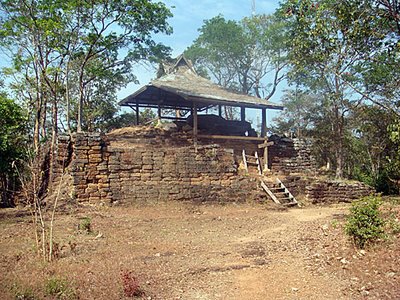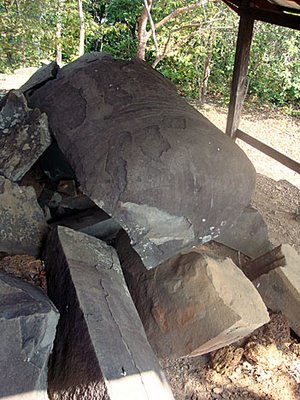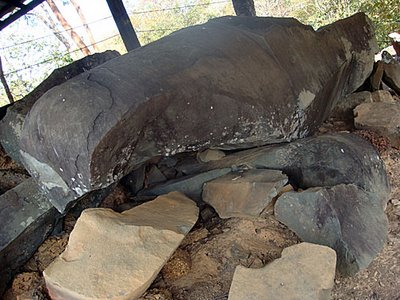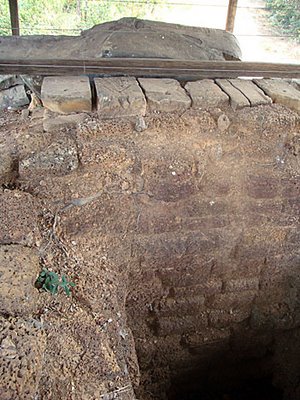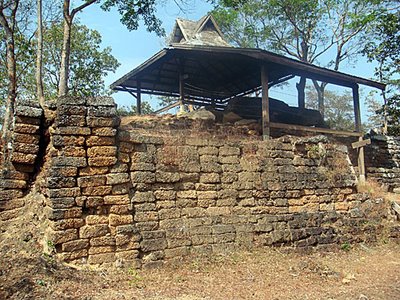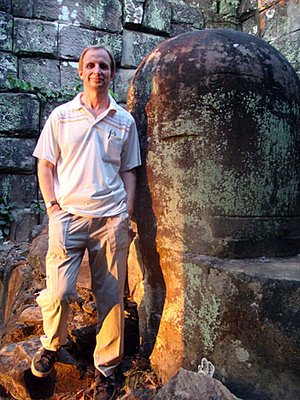Cambodia's largest linga
It's difficult not to connect the linga with the male organ especially when it sits astride the pedestal or yoni, which represents the female form. There are schools of thought that support that connotation whilst others see no sexual symbolism in it at all, choosing to identify the linga in its three components; the bottom part (representing Brahma) which is four-sided and remains under ground, the middle part (Vishnu) which is eight-sided and remains on a pedestal and the top part which is round and symbolizes the essence of Shiva. There are some fine examples of large linga at Koh Ker - as seen in the photo below - though the largest linga that I know of in Cambodia is to be found at Phnom Bok, but it takes an exhausting climb to reach the summit of the hill and the 10-ton linga itself is badly damaged. Phnom Bok is 25kms north of Siem Reap and is one of three mountain-temples built by King Yasovarman I in the late 9th or early 10th century, each of which was believed to have contained a giant linga in worship of Shiva. Only the Phnom Bok linga remains today and despite its damaged state, the 4 metre long stylised image of a phallus sits next to its original location and must've been a dramatic figure of worship in its heyday. About 150 metres away sits a three sanctuary tower temple also dedicated to the Hindu Trinity of gods (Shiva, Vishnu and Brahma). Work has recently been completed to renovate the linga site but the wood and corrugated iron roof above it looks awful. The hole into which the linga would've stood upright is pretty deep and constructed of laterite stone blocks. And believe me when I say the 630 steps to reach the top demand a lot of energy. However, you are rewarded with gorgeous views over the surrounding countryside, an interesting hilltop temple and the largest linga in Cambodia.
